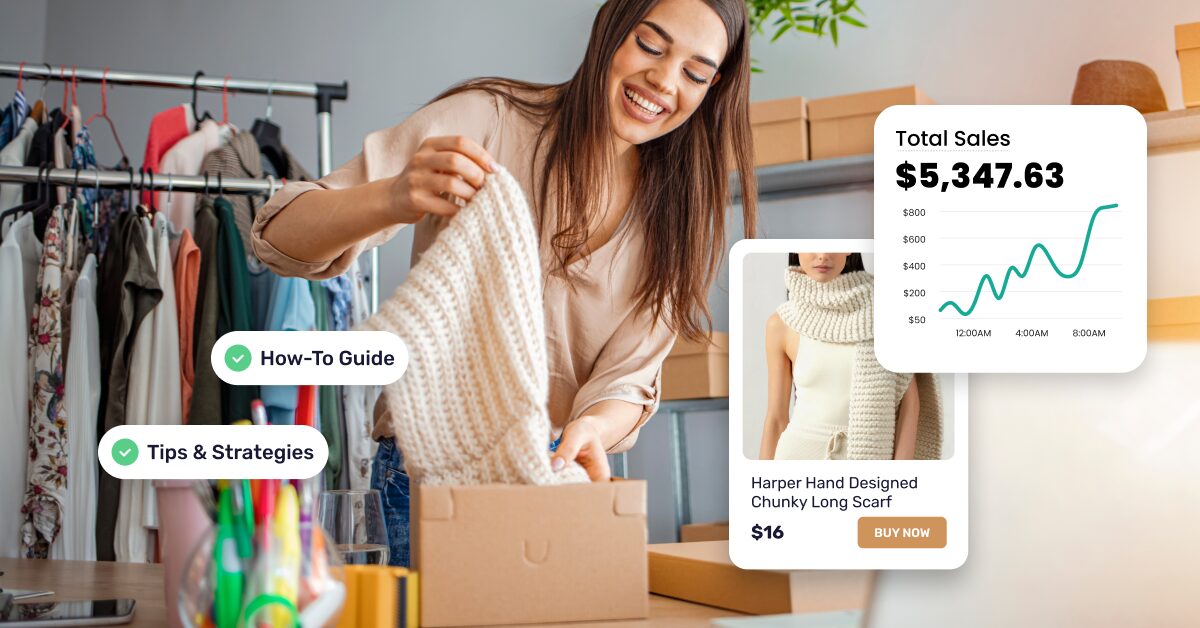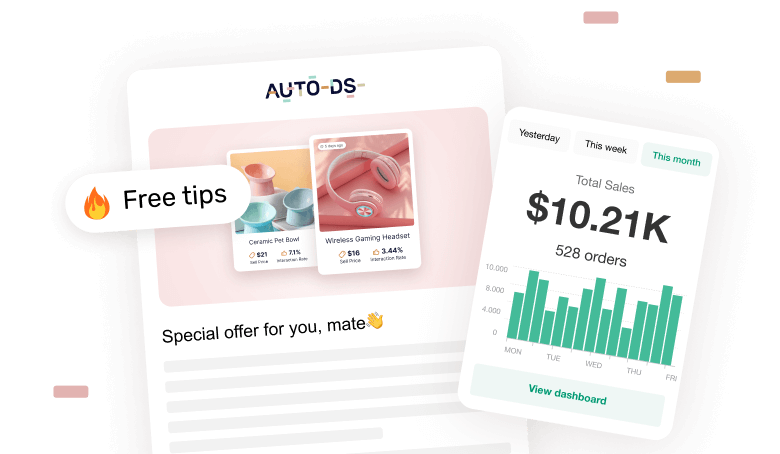Thinking about how to sell online but not sure where to begin? You’re not alone, my friend. For many beginners, the world of online selling can feel overwhelming: so many platforms, so many products, and so many decisions to make.
Maybe you’re wondering what to sell, how to reach your first customers, or how to avoid rookie mistakes. Luckily, you don’t need to have it all figured out from day one.
In this guide, we’ll walk you through step-by-step instructions on how to sell online. The secret ingredient? Automation. AutoDS helps beginners get started with online selling by automating time-consuming tasks like product imports, order fulfillment, and price updates.
So, no matter if you’re planning a side hustle, building a full-on e-commerce brand, or just peeking at what’s out there for you, this article will give you a clear path forward.
AutoDS helps beginners launch online stores by automating product imports, pricing, and fulfillment.
Dropshipping offers the lowest-risk way to start selling without inventory.
Winning product categories like beauty, home decor, and pet supplies are ideal for new sellers.
Marketing success comes from understanding your audience and using the right channels.
Automation allows sellers to scale faster and avoid burnout from repetitive tasks.
Why Selling Online Is A Smart Move In 2026

If you’ve ever dreamed of working from home, building something of your own, or earning money while you sleep, selling online makes it possible. It is one of the best business ideas for many reasons:
- Low startup costs: You don’t need a physical store or a garage full of products to get started.
- Sell from anywhere: Laptop, Wi-Fi, and you’re good to go. It’s that flexible.
- Reach customers worldwide: Your audience isn’t just your city; it’s anyone with internet access.
- 24/7 sales: Your store works while you’re at the gym, sleeping, or binge-watching Netflix.
- Easy automation: Tools like AutoDS handle product sourcing, pricing, fulfillment, and even tracking updates.
- Simple inventory tracking: Stay in control without spreadsheets or stockrooms.
Online selling gives you freedom and flexibility (especially when you automate the hard parts).
The Different Methods Of Selling Online
There’s more than one way to build a successful online business. Choosing the right method depends on your budget, goals, and how hands-on you want to be.
Before we break down each model, let’s cover the basics of what every solid online store needs.
What Every Online Store Needs
- A recognizable brand: Think logo, colors, tone of voice. Something that feels like you and speaks to your audience.
- A user-friendly store: Your store should be easy to navigate, mobile-friendly, and visually clean.
- A marketing plan: Even the best products won’t sell themselves. Social media, content marketing, email, paid ads—pick what fits your vibe and go with it.
- A fulfillment system: Whether you’re packing orders yourself or using automation tools, customers expect fast, reliable shipping.
Once you’ve got that foundation, you can choose the selling method that suits your style. Let’s break them down.
Dropshipping
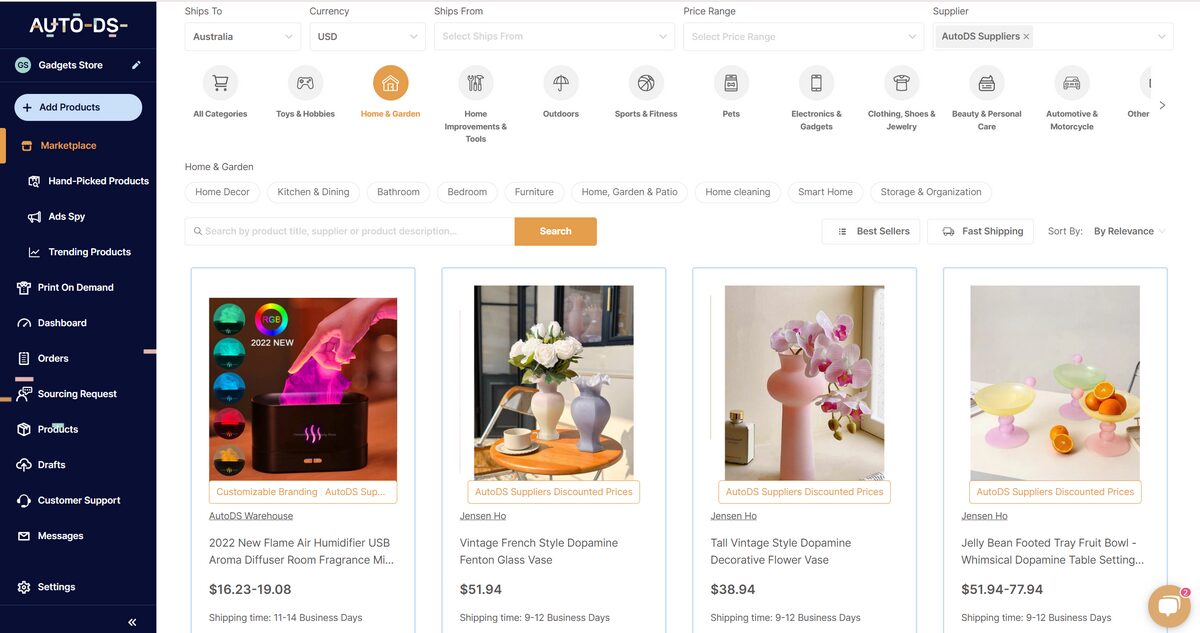
Dropshipping is the easiest way to start selling online. You don’t hold inventory; when someone places an order, your supplier ships it directly to the customer. That means zero stock, zero packaging, and almost no upfront risk.
It’s a great way to test different products or niches without spending a lot. Many dropshippers use automation tools like AutoDS to save time on manual work like listing products, setting prices, or managing orders.
Dropshipping Quick Facts:
- ✅ No inventory or storage needed
- ✅ Low startup costs
- ✅ Easy to scale and test new products
- ✅ Run from anywhere with Wi-Fi
Example niche: Home & Garden with AutoDS-synced suppliers.
Print On Demand

Print on demand (POD) lets you create custom designs and sell them on items like shirts, mugs, posters, or phone cases. You create the artwork or slogan, and a POD supplier handles the printing and shipping every time someone orders.
This model is perfect if you’re artistic or want to build a brand around a niche or lifestyle. You don’t need to buy inventory in advance; you can constantly add new designs to keep your store fresh.
Print On Demand Quick Facts:
- ✅ Sell original designs with no inventory
- ✅ Great for artists, influencers, or niche creators
- ✅ Easy to launch with trending or seasonal products
- ✅ Low startup costs
Example platform: AutoDS Print-on-Demand feature for automated product imports and fulfillment.
White Labeling
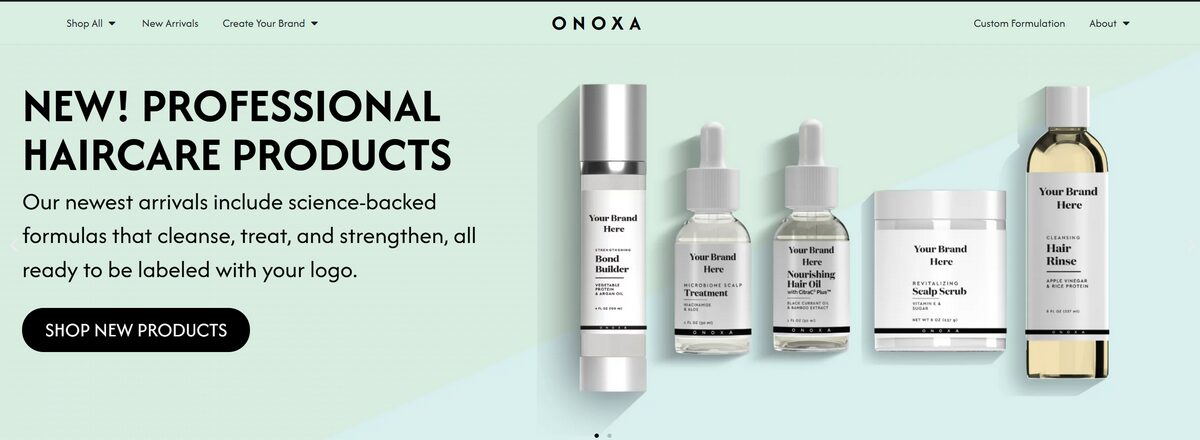
White labeling means buying generic products from a manufacturer and rebranding them as your own. You control the packaging, name, and customer experience without needing to formulate or produce the actual item.
It’s ideal for entrepreneurs who want full brand control and higher margins. Beauty, wellness, and supplement brands often use this model to build loyal audiences and scale quickly.
White Labeling Quick Facts:
- ✅ Total brand control
- ✅ Higher profit potential
- ✅ Ideal for beauty, skincare, health, and niche products
- ✅ Medium to high startup costs
Example supplier: Onoxa, popular for skincare white labeling.
Wholesaling

Wholesaling is a more traditional route. You buy products in bulk (usually at discounted rates), store them yourself, and sell them at a markup. This method gives you full control over shipping, inventory, and customer experience.
The biggest advantage? Higher margins. But it also requires more upfront investment and space to store products, so it’s better suited for sellers with capital to invest or those scaling an existing brand.
Wholesaling Quick Facts:
- ✅ Greater control over quality and logistics
- ✅ Higher profit margins per unit
- ✅ Better for sellers with storage space and budget
- ✅ Moderate to high startup costs
Example platforms: Alibaba (global sourcing), Costco (domestic bulk buying).
Subscription Services
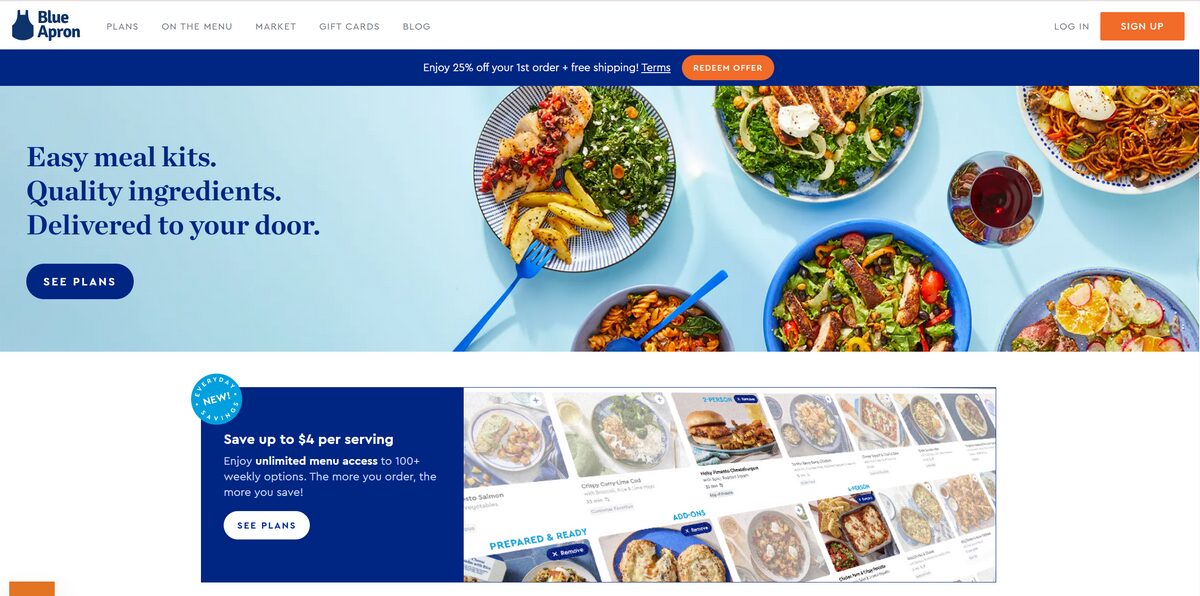
Subscription selling means offering your product or service on a recurring basis (monthly, quarterly, or even weekly). This model builds consistent income and long-term customer relationships.
It works well if you have a niche community or product that people need regularly. Just keep in mind that customers expect high value and great service to stay subscribed.
Subscription Services Quick Facts:
- ✅ Recurring revenue = stability
- ✅ High customer loyalty
- ✅ Best for consumables, digital goods, or themed kits
- ✅ Medium startup costs
Example brand: Blue Apron, a meal kit delivery subscription.
How To Sell Online: Step-By-Step Guide For Beginners
Let’s keep things simple. When selling online, we can’t just do everything at once. We want to start building our online business step by step. Here’s a beginner-friendly path to help you go from idea to first sale without feeling lost.
1. Choose Your Niche And Products
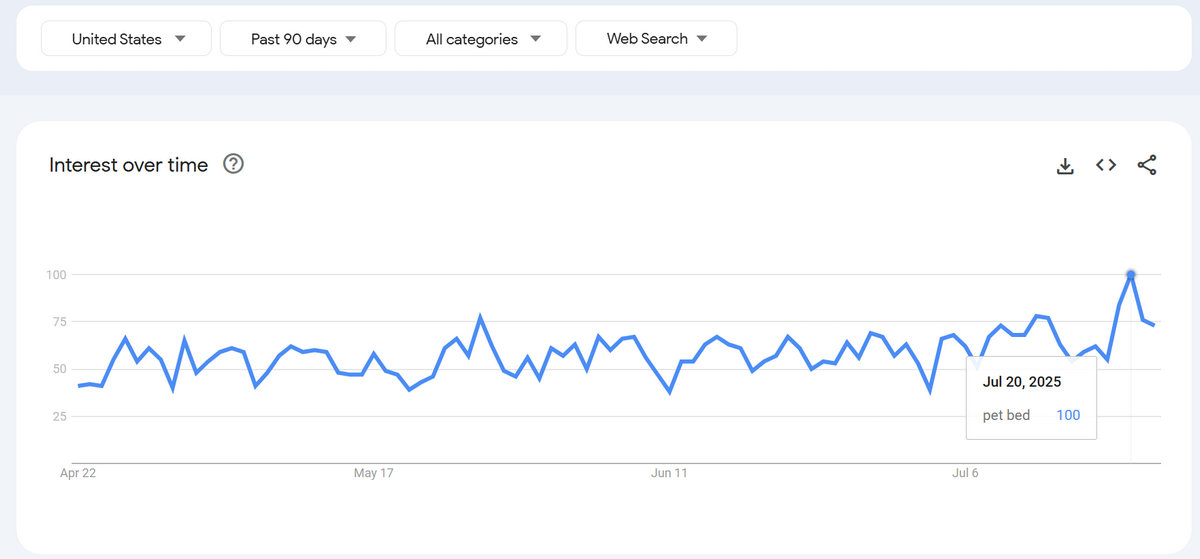
Start with something that actually interests you. It’ll keep you motivated when things get tough, and trust me, consistency is half the game. It can be skincare, fitness gear, or cozy pet beds; the goal is to find a niche with high demand and a product people already want to buy. And don’t worry if your first idea isn’t perfect; you’ll learn as you go.
Ways to choose a niche:
- Check Google Trends or TikTok for product ideas
- Look for gaps in quality, price, or delivery speed
- Think seasonal: what are people buying this month?
- Make sure the niche isn’t overly saturated
2. Find A Trustworthy Supplier

This step is often underrated, but it is crucial. A great product means nothing if it arrives late, broken, or not at all. Your supplier is your behind-the-scenes partner, so reliability, speed, and quality matter more than anything. So, focus on finding a great supplier and always test their service before going all in.
Ways to identify a good supplier:
- Fast and trackable shipping
- High product quality (order samples!)
- Clear return and refund policies
- Good communication
3. Understand Your Audience

Before you build your store, figure out who you’re building it for. The better you understand your customer, the easier it’ll be to write product descriptions, create content, and run ads that actually convert. Think of it like building a store for someone you already know: it instantly gets more personal and effective.
Ways to understand your audience:
- Create a simple customer persona (age, lifestyle, interests)
- Think about their problem—what are they trying to fix or enjoy?
- Visit Reddit, Facebook groups, or Amazon reviews to hear their voice
- Use those insights to shape your store’s messaging
4. Build Your Store

This is where your idea becomes real. Focus on creating a clean, trustworthy space that makes people want to click “Buy.” Don’t aim for perfection—aim for done. You can always tweak things later as you learn what works.
Whether you’re selling on Shopify, Wix, or Etsy, focus on creating a clean, trustworthy space that makes people want to click “Buy.” Shopify is great for dropshipping beginners who want full control over their branding and product catalog.
Ways to build a great store:
- Use high-quality product photos
- Make sure your site looks good on mobile
- Keep navigation easy—don’t overcomplicate it
- Include clear return/shipping info and trust signals (like reviews)
💰Financial Tip: Don’t overpay a web designer! Try the AutoDS AI Shopify Store builder for just $1. You’ll have a full store ready in minutes, with niche products already loaded.
5. Promote Your Store
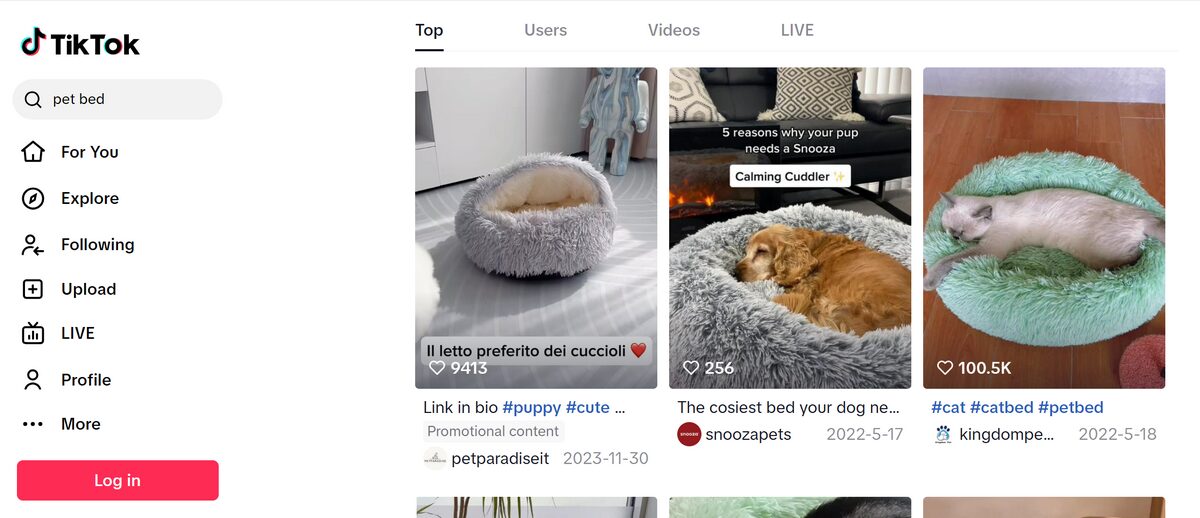
Now comes the part that brings in traffic and sales. You don’t need a huge budget or big following to start. In fact, some of the best results come from small, targeted efforts done consistently. Pick a channel your audience actually uses, experiment, and pay attention to what works.
Short-form video is driving massive product discovery right now, which makes TikTok dropshipping one of the hottest strategies for new sellers. You don’t need to go viral—just focus on showing off your product in action and making it relatable.
Ways to promote a store:
- Post short-form videos on TikTok or Reels
- Run a small ad campaign ($5/day is enough to test)
- Offer a launch discount or bundle deal
- Use email to re-engage store visitors
📢 Marketing Tip: Influencers with <10k followers often have better engagement (and lower rates) than big names. Great for product seeding.
What To Sell Online: 10 Best Product Categories For High Profits
Picking the right product category can make all the difference. Some categories are saturated or seasonal, while others offer year-round demand, loyal customers, and high margins. Let’s look at 10 top-performing product niches that are worth exploring in 2026.
1. Health & Beauty
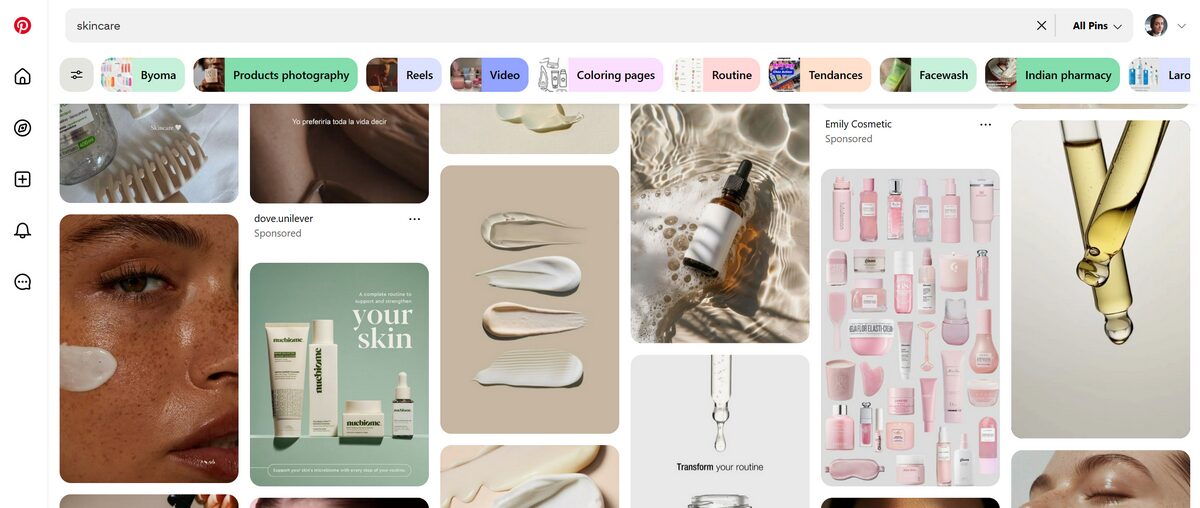
Health and beauty products are always in demand. People love to invest in how they look and feel. From skincare serums to wellness supplements and grooming kits, this category offers repeat purchases and a wide range of sub-niches.
As self-care culture continues to grow globally, so does the appetite for high-quality beauty items. Plus, many of these products are small and lightweight, which means cheaper and faster shipping.
🆕Beginner’s Tip: Make sure your products meet safety standards and local regulations, especially when selling skincare or ingestibles.
2. Home Decor & Garden
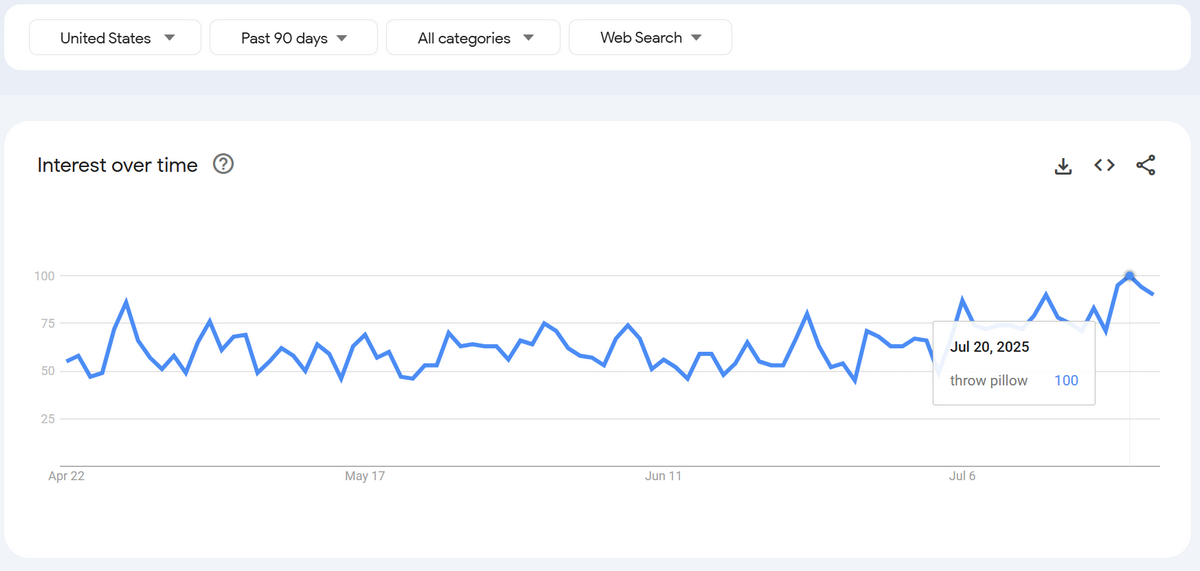
With more people working from home or investing in their living spaces, home decor and garden items have exploded in popularity. Think cozy throw blankets, wall art, indoor planters, LED lighting, or even mini fountains: people want to personalize their spaces. This niche allows a lot of creative freedom and storytelling in your branding. And it’s also a great match for visual platforms like Pinterest and Instagram.
3. Consumer Electronics

Tech gear is one of the fastest-growing online categories. From phone accessories and charging cables to smartwatches and home gadgets, there’s a huge demand, especially for practical, problem-solving items.
While some electronics can be pricey or technical, many accessories (like stands, cases, or earbuds) are simple to sell and have strong profit margins. Just be sure to provide detailed product descriptions and clear return policies.
4. Kids’ Toys
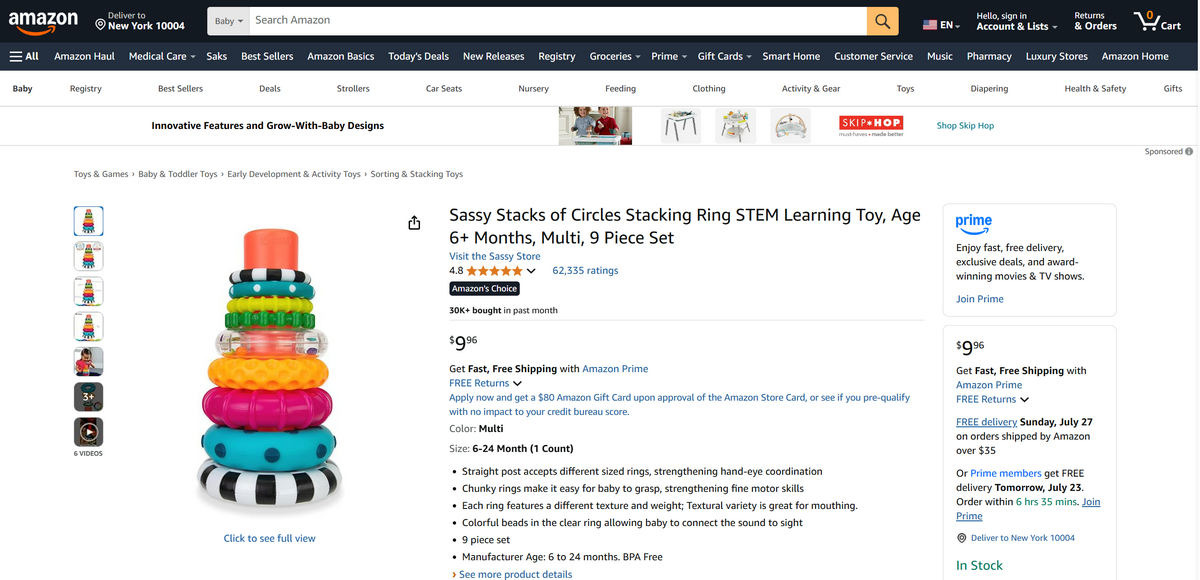
Toys never go out of style, and parents are constantly searching for fun, educational, and safe options for their kids. From STEM kits to sensory toys and puzzles, there’s a wide variety to choose from. The best part? New trends emerge all the time, especially around holidays and viral content. If you stay on top of what’s trending on TikTok or YouTube Kids, you can catch demand before it peaks.
🔍Research Tip: Look at Amazon’s “Movers and Shakers” toy section or use AutoDS’s product research tool to spot rising products.
5. Pet Supplies
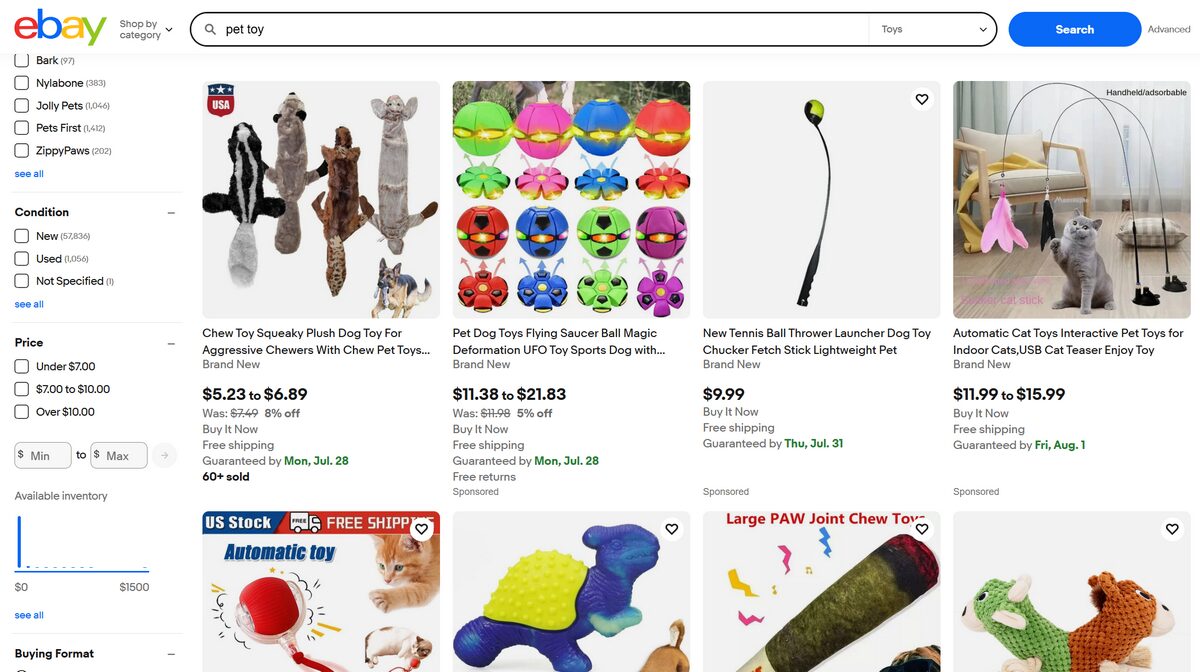
Pet owners love spoiling their furry companions, which makes this category a goldmine. Essentials like grooming tools, pet beds, travel accessories, and toys are always in demand.
Plus, the pet supplies niche has passionate communities you can tap into through content or influencer marketing. It also offers high repeat purchase potential since pets constantly need restocking (think treats or waste bags).
6. Sports & Outdoors
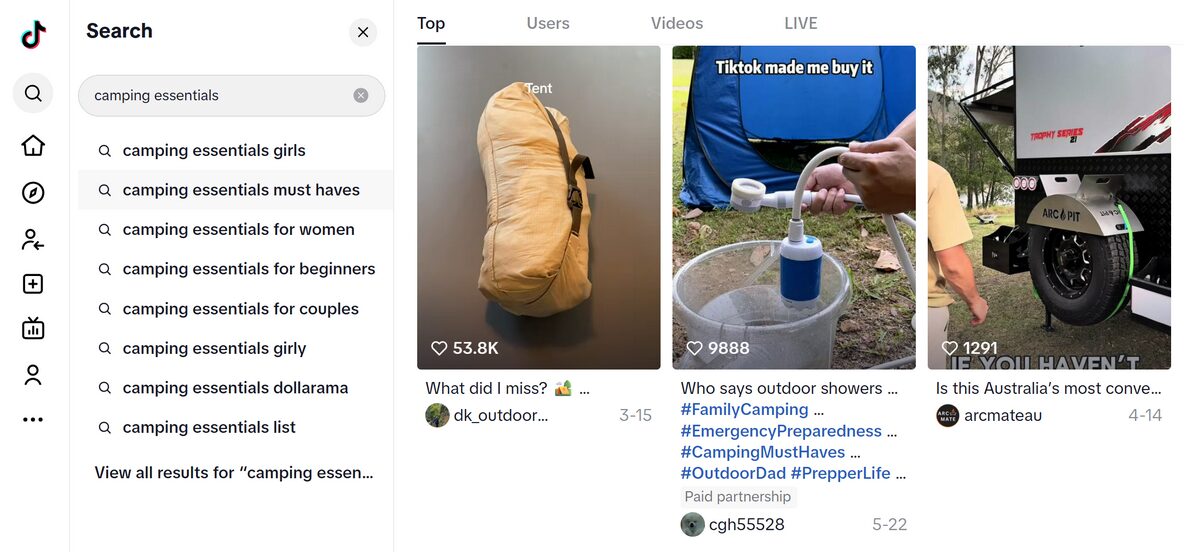
As more people focus on staying fit and enjoying the outdoors, this category continues to thrive. From yoga mats to resistance bands, portable blenders, camping gear, or bike accessories, there are so many angles to explore.
The key here is to understand your sub-niche—outdoor adventurers have different needs than home gym users. Also, seasonality plays a role, so rotate your product mix depending on the time of year.
7. Home Improvement

DIY culture is huge right now, and the home improvement category is reaping the rewards. Think peel-and-stick wallpapers, tool sets, storage solutions, or smart lighting. These products often solve small but annoying problems, which makes them easy to market with before-and-after content. Many shoppers also prefer to buy these items online for convenience and variety.
8. Office & School Supplies
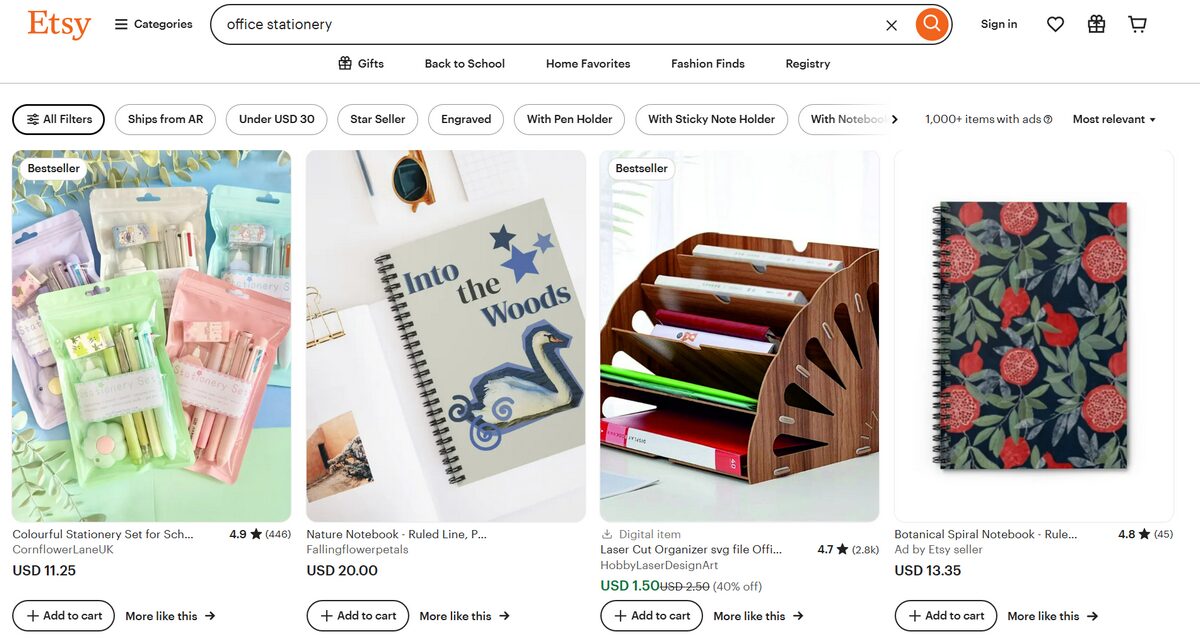
With remote work and online learning here to stay, this category has evolved into a steady winner. We’re talking planners, ergonomic desk gear, blue light glasses, or cute stationery. It’s a great space for both practical and aesthetic products. And back-to-school dropshipping season gives you a major sales spike to plan for each year.
9. Apparel & Accessories

Fashion is a massive e-commerce category with endless niches. Trends change fast, but so do buying habits. Shoppers are used to grabbing fashion pieces online, especially when they’re affordable and fresh. If you stay up to date with TikTok fashion trends or Pinterest boards, this category can be super rewarding.
10. Gaming Equipment

Gamers are some of the most loyal (and spendy) online customers out there. Whether it’s mechanical keyboards, gaming headsets, ergonomic chairs, or LED light strips, there’s always something trending. This niche also overlaps nicely with content creators and streamers, giving you extra marketing opportunities. Plus, many of the products are plug-and-play, with no long learning curve required.
🔍 Research Tip: Follow gamer subreddits or YouTube reviews to see what’s trending before it hits mainstream markets.
5 Tips For Becoming The Best At Selling Online

Even with the right products and a beautiful store, success doesn’t happen by accident. The best online sellers keep improving day by day, order by order. These tips will help you build trust, scale faster, and stand out in a crowded marketplace.
1. Focus On Amazing Customer Service
Your product gets them in the door, but your service keeps them coming back. Fast replies, clear return policies, and thoughtful touches can turn a casual shopper into a loyal fan. Even one bad review can hurt, so go the extra mile when something goes wrong.
Do this:
- Reply to messages quickly (within 24 hours is ideal)
- Include handwritten thank-you notes or surprise discounts
- Make return instructions simple and visible
- Check in after delivery to gather feedback
2. Always Be Doing Product Research
Winning products don’t stay “winning” forever. Markets shift, trends fade, and competition grows. That’s why ongoing research is crucial. You want to spot new opportunities before everyone else jumps on them. Use every tool you can to monitor market trends, competitor listings, and social media buzz.
Do this:
- Set aside time weekly to browse TikTok, Amazon, and AutoDS product finders
- Read product reviews to find gaps in quality or function
- Watch YouTube hauls or unboxings in your niche
- Pay attention to rising searches in your Google Analytics
🔍 Research Tip: Check the weekly AutoDS “Sell These Now” YouTube playlist. It’s basically free trend forecasting.
3. Offer Fast And Reliable Shipping
Shipping speed is one of the top reasons people abandon their carts or leave bad reviews. You don’t need to offer same-day delivery, but you should be clear and consistent about what customers can expect. Also, tracking numbers and proactive updates can reduce refund requests and support tickets.
Do this:
- Work with suppliers that offer 5–12 day delivery windows
- Use automated tracking tools}
- Add shipping FAQs to your product page
- Communicate delays before customers need to ask
4. Keep Improving Your Store
Your store is a living project. As you learn more about your audience and what’s working, you’ll want to tweak your product pages, test new layouts, and improve performance. The best stores evolve constantly, based on data and customer feedback.
Do this:
- Test new headlines, images, or call-to-actions every few weeks
- Remove underperforming products and upsell bestsellers
- Optimize your store for mobile visitors
- Ask customers what confused them and fix it
💡 Pro Tip: Use session recordings (like with Hotjar) to watch how real people navigate your store—you’ll find surprising blind spots.
5. Use Automation To Scale Without Burnout
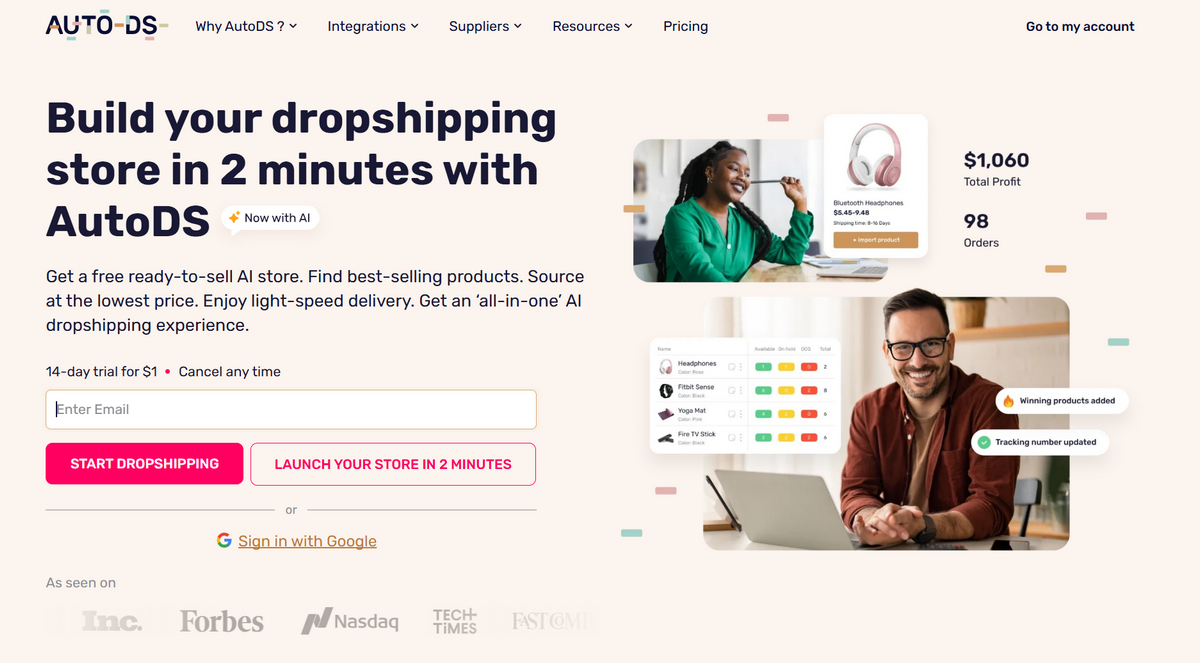
As your sales grow, so will your workload, unless you automate the repetitive stuff. Product imports, price monitoring, order tracking, and inventory syncs are all things you shouldn’t be doing manually once your store gets rolling. Automation tools like AutoDS free you up to focus on growth, not grunt work.
Do this:
- Use AutoDS to import products in one click
- Turn on automatic pricing rules and stock updates
- Let AutoDS handle order fulfillment and tracking
- Set alerts for reviews, out-of-stock items, or order issues
Frequently Asked Questions
What is the best method for selling online?
Dropshipping is one of the best methods for beginners because it removes inventory management and lowers upfront costs. It allows sellers to test products quickly and scale faster without warehousing. AutoDS simplifies dropshipping by automating product imports, order fulfillment, and price monitoring.
Can I sell online for free?
Yes, you can start selling online with little to no upfront cost by using platforms like Shopify’s free trials or marketplaces like Facebook Marketplace. Dropshipping is especially budget-friendly since you don’t need to buy products in advance. AutoDS allows beginners to start selling with minimal investment by providing access to free supplier catalogs and automated store setup.
What are the best platforms to sell products online?
The best platforms include Shopify, Wix, WooCommerce, Amazon, and eBay. Each has different strengths depending on your goals and experience level. Shopify offers the most flexibility for brand building, while AutoDS enhances Shopify and other platforms with automation.
How do I know what products to sell?
The best products solve real problems, follow trends, or tap into passionate audiences. Tools like Google Trends, Amazon Best Sellers, and AutoDS product research can reveal what’s currently in demand. AutoDS helps beginners find winning products by tracking sales data and trends across multiple suppliers.
AutoDS Makes Online Selling Easier Than Ever in 2026
Starting an online business might feel intimidating, but once you understand the basics—and have the right tools—it becomes a lot more doable (and even fun). From choosing your niche to building your store and promoting your products, every step gets easier with a little structure and support.
AutoDS provides beginner-friendly automation that streamlines dropshipping and removes the technical roadblocks most new sellers face. You can manage your entire store from one dashboard instead of juggling multiple apps or manually updating stock. That means less time on repetitive tasks and more time focusing on what actually grows your business.
Remember: your success starts with small, consistent steps, and smart tools that make it all easier.
Want to keep learning? These next articles can help:






